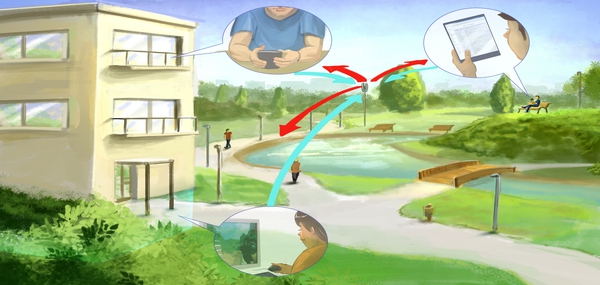Wireless LAN in Paired Radio Spectrum with Downlink-Uplink Separation
This paper describes and evaluates the feasibility of a WLAN system operating in paired spectrum with a proof of concept implementation.
April 6, 2014
IEEE Wireless Communications and Networking Conference (WCNC) 2014
Authors
Stefan Schmid (Disney Research/ETH Joint PhD)
Stefan Mangold (Disney Research)
Thomas Gross (ETH Zurich)
Wireless LAN in Paired Radio Spectrum with Downlink-Uplink Separation
Wireless Local Area Networks (WLANs) based on the IEEE~802.11 standard apply a simple contention-based radio access protocol. Downlink communication from access points to mobile stations shares the radio channel with uplink communication from mobile stations to the access points. This protocol is due to the contention-based design that targets the operation in unlicensed spectrum. In the future, because of the growing demand for wireless communication services, WLANs might not only operate in unlicensed but also in licensed spectrum. However, licensed spectrum favors the use of separate (paired) radio channels for downlink and uplink communication — a setup that requires frequency-division-duplex communication. This paper describes and evaluates the feasibility of a WLAN system operating in paired spectrum with a proof of concept implementation. Our testbed employs off-the-shelf WLAN chips (two per device) and driver modifications that enable the system to operate with downlink-uplink separation while still maintaining the ability to function in unlicensed (single-channel) spectrum. We provide insights based on our testbed and evaluate the performance of our solution.

